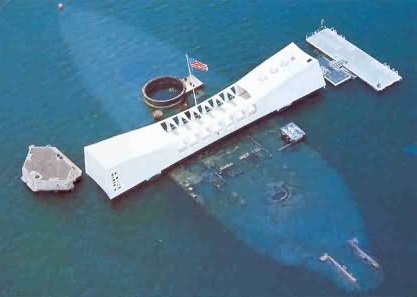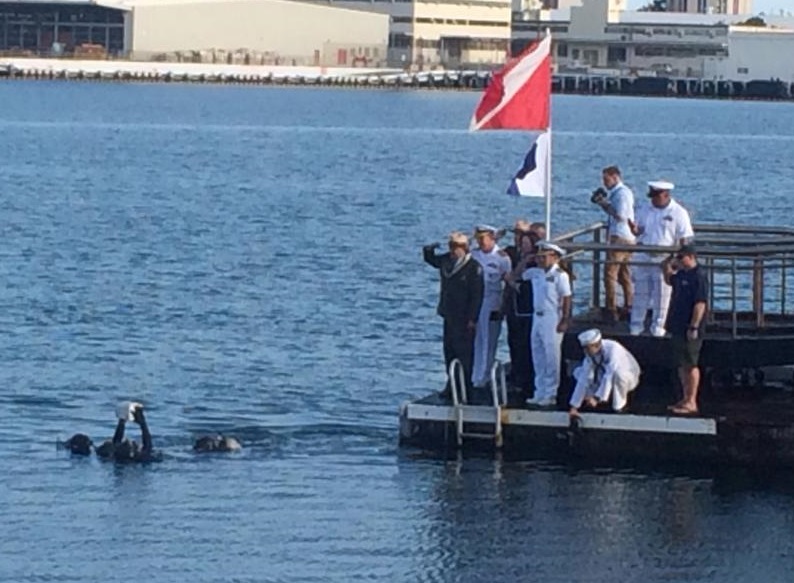Ed Wentzlaff’s remains laid to rest alongside USS Arizona shipmates
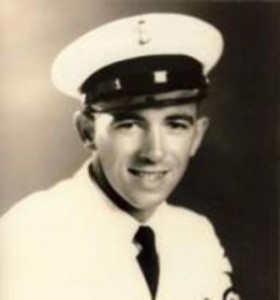
The late Edward “Ed” Wentzlaff’s 70-year-old wish was recently fulfilled. His ashes were returned to Hawaii and placed alongside those of his fellow shipmates – 1,177 sailors and Marines – of the USS Arizona who lost their lives the Sunday morning of December 7, 1941, during the surprise attack by the Japaneses on Pearl Harbor on the island of Oahu.
Wentzlaff, 25-years-old at the time of the attack, escaped the bombing, strafing and fires – surviving despite being right out in the open on the battleship’s forward deck.
United States Navy divers interned the urn containing the remains of Wentzlaff inside the sunken hull of the Arizona on Saturday, December 7, 2013 – the 72nd anniversary of the attack.
Wentzlaff died of bladder cancer on Tuesday, September 10, 2013, at the Veteran’s Administration Hospital in St. Cloud at the age of 95 – seven decades following that Sunday morning in 1941. It is believed he was the last Minnesota survivor of the Arizona attack.
Many years ago, I was able to sit in on an interview of Wentzlaff for publication on the anniversary of the Pearl Harbor bombing. Wentzlaff shared that when the first attack planes appeared out of the blue Hawaii sky, he was onboard ship shaving, preparing to attend Sunday church service. Wentzlaff believed that his survival was due to his split-second decision to run to his battle station – instead of fleeing the attack by going below deck. A bomb that hit an ammunition magazine sank the Arizona. The sinking of the ship accounted for nearly half of all the Americans killed at Pearl Harbor. Wentzlaff said that he had jumped from the bombed, burning and quickly-sinking ship and swam to shore – right through oil burning on the lagoon harbor water’s surface.
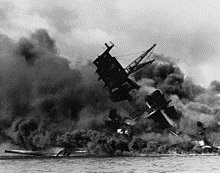
Wentzlaff of Milaca, and formerly of Butterfield (which was where he lived at the time of the interview), had revisited Pearl Harbor approximately 10 times over the years, but in addition to the return visits, had spent his lifetime since that December day fighting back the haunting memories of the the fires, the explosions – and the screams of his shipmates.
At a Pearl Harbor anniversary recognition in St. Paul several years ago, Wentzlaff told those gathered – which included a Star Tribune reporter who reported on the presentation – “Every time I go there I look back and feel worse.” He added in his comments, “Some moments are too ghastly to remember. Some are so horrible that they defy forgetting. I put that day at Pearl Harbor in that last category.”
Wentzlaff was born in 1917 in Nicollet and joined the United States Navy on December 8, 1937. At the time he enlisted, work was scarce as the country was still in the Great Depression, and the $21 a month pay looked pretty good. He was eventually honorably discharged from the Navy as a chief warrant officer and was also named a lifetime member of the USS Arizona Society. It was because of this membership – a survivor of the attack on the battleship – that he qualified for the rare honor of having the Navy divers place the urn containing his remains at the spot where the sunken Arizona sits this past December 7.
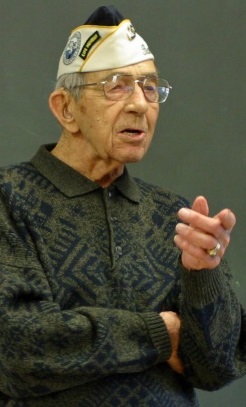
While living in Butterfield, he served as its mayor, was a member of the Butterfield-Odin Public School Board and PTA president, was commander and lifetime member of the Donald Larson VFW Post #9607 and served as, Watonwan County Commissioner. He was also a Milaca American Legion Post member.
More than 50 of his family and friends traveled to Pearl Harbor to participate in the in the inurnment service in Hawaii. Survivors include Ed’s children, Steven Wentzlaff and Peter Wentzlaff, both of Butterfield; Mary Flock and Judith Atkinson, both of Milaca and Paul Wentzlaff of Yankton, South Dakota. Additional survivors include his sisters, Eunice Ranweiler, of St. Cloud; Virginia Christle, of Brainerd; Geraldine Leonard, of Nicollet and Shirley Peterson of Woodbury; brother, Bob Wentzlaff, of Yankton.; seven grandchildren, 15 great-grandchildren and two great-great grandchildren.
In a biting bit of irony, Wentzlaff was due to be discharged on December 8, 1941 – but – the attack and entry of the United States into World War II dramatically changed those plans.
